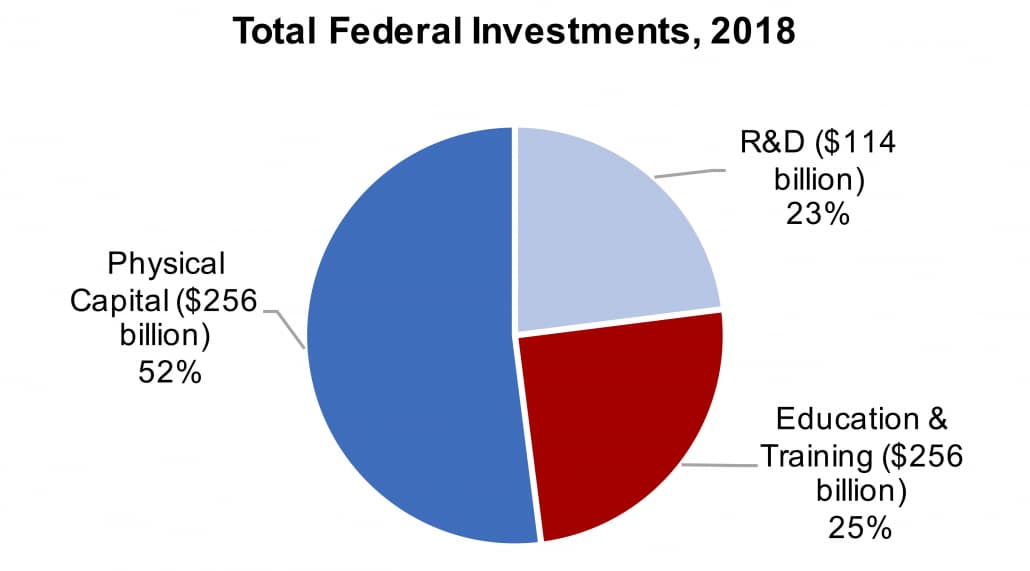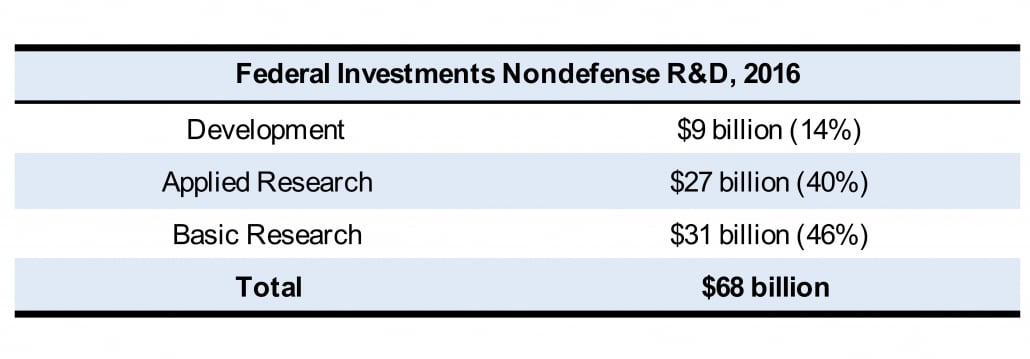Health Research Leads US Federal R&D Investments
Investments made by federal governments are key to driving stable economic growth, as they can support business, foster innovation and help establish skilled workforces. A new report released by the US Congressional Budget Office (CBO) examines federal investments from 1962 to 2018, assessing allocations towards defense and nondefense spending. The three main categories that that federal government invests in, as per the report, are physical capital, R&D, and education and training. Federal spending for R&D is vital to supporting government labs, academic institutions and the private sector, as it backs health research, and basic research in physics and chemistry.
In regards to R&D, the CBO states that beginning in 2017, “values for investment in research and development reflect a new definition of development,” with the new definition aligning with international standards as well as data from the NSF. The CBO now defines development “more narrowly; it does not include demonstrations of systems for a specific use, nor does it include nonexperimental work on a product or system before that product or system goes into full production.” Because of this change, data in the report (and in this article) from 2016 and prior years are based on the older, more expansive definition of development.
In 2018, the US government spent a total of $492 billion on R&D investments, accounting for 12% of federal spending and 2% of GDP, numbers that have stayed relatively steady over the past 25 years. However, while almost all federal R&D investments are discretionary spending, which are controlled by the US Congress’ appropriation acts, as a proportion of discretionary spending, investments have slowly decreased, falling from approximately 50% in the 1960s to around 40% currently.
About 60% of total government investments in 2018, or $297 billion, which accounted for 1.5% of GDP, went into nondefense spending, with 22% of that allocated to R&D. Of the remaining 2018 investments that were for defense, $195 billion, or nearly 25%, went to defense R&D, which concentrates more on development as opposed to basic or applied research.
Nondefense Spending Trends
In 2016, which is the most recent year for which data available, federal nondefense investments reached $68 billion (in 2018 dollars), with the majority of that investment going towards basic and applied research. The CBO indicates that the government plays a larger role in nondefense basic and applied research because private companies do not invest in research as much as they do in development, as it is difficult to predict the commercial and scientific impact of a product when it is in the research stage; in contrast, the private sector heavily invests in development, due to incentives to create commercially successful and sustainable products.
Federal investments in health research have been climbing since the late 1990s, and while they plateaued in the mid- and late-2000s, they spiked again in 2011, reaching $40 billion and accounting for over 50% of nondefense R&D investments. In the past couple years, federal spending on health research has settled back into the mid- and late 2000s levels, and continues its steady upward trend.
General science, space and technology has been the second-largest recipient of federal nondefense R&D investments over the past two decades, with spending reaching $20 billion in 2018, largely received by NASA and the NSF. Investments in transportation, agriculture, and natural resources and environment R&D made up 12% of nondefense R&D spending in 2018 with an allocation of $8 million, while DoE R&D spending amounted to $3 billion.
While overall federal spending on R&D has kept up with economic growth since the early 1960s, industry spending has been the primary source of funds for R&D since 1980. However, the majority of grants, including R&D grants, to state and local governments are still primarily from federal sources, of which grants make up a significant portion. For example, in 2018, grants represented 46% of the $121 billion federal nondefense spending, or $56 billion, which went to education and training. In the same year, though, no federal investments went to state and local governments grants for R&D, with the government instead allocating funds towards federal research at government labs, higher education institutions, nonprofits and private companies.







